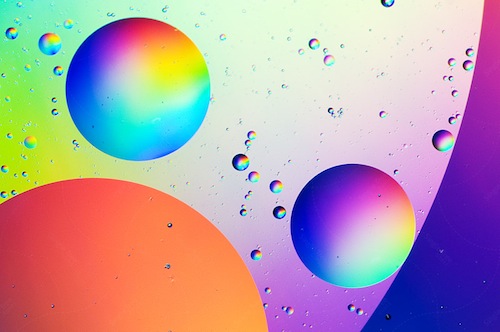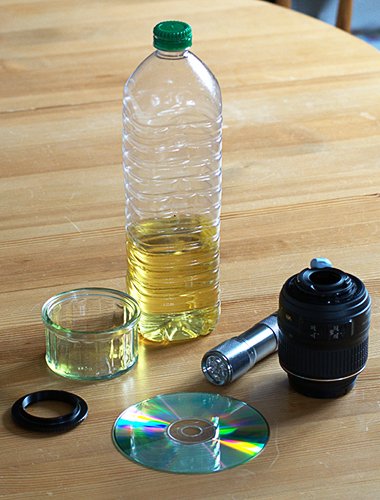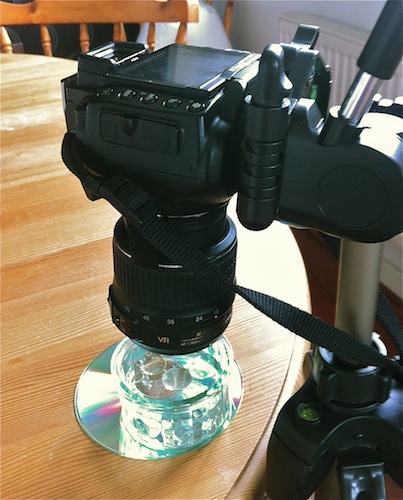Archive for August, 2011
In the photographer’s mind: An interview with top rep user Matt Grum
This week I’ll be posting portions from an interview with our resident top reputation user, Matt Grum. He’s a software developer by day and photographer by night – the near superhero like duality many on here hope to achieve. I’ll be posting major snippets and linking to the full text. Check him out at mattgrum.com. (The various … are just in there to indicate the actual chat conversation contained other pieces there.)
Me: When did you start photography and what got you interested in it?
Matt Grum: My parents were both amatuer photographers, and I was given an old olympus OM as a present when I was about 11 or so. I remember learning how to use an SLR, and I was particularly interested in double exposures and doing long exposure photos of fireworks etc.
Me: Did your parent’s style of photography influence you?
Matt Grum: I guess not, my dad was more interested in the technical side, being an engineer. My mum would shoot mostly nature and landscapes. Even at that age I was more into setting up shots and experimenting. Rather than shooting what’s around me. … I’m very into colours, and spend a long time trying to get the right [colours].
Me: You do a lot of portrait work though, yes? Seems like a lot of events, band photos, weddings, etc
Matt Grum: Yeah. I must admit I at least try to be broad and do as much as possible, but you have to try and present a certain image on the web – towards the sort of work you want to get. But yeah, there’s stuff I wouldn’t put on my main site. Like this: http://www.flickr.com/photos/matt_grum/2064359396/in/set-72157603293003008
I don’t think you’d hire that guy as a wedding photographer. …
Me: Is that the kind of stuff you want to do, but can’t as a mainstream photographer?
Matt Grum: Well you can do both, you just have to market them separately.
…
Me: You’re currently in computer development as a large part of your income, yes?
Matt Grum: Yeah, my background is in software engineering. (Like a lot of folks on photo.se.)
Me: So, you’re doing photography professionally ‘on the side’ then?
…
Matt Grum: Yeah, I know lots of people who are living on photography, but I prefer my situation for now as it means I don’t have to compromise on quality. I can be picky.
Me: Sure, only taking the jobs that you like. Do you find it difficult to balance with your tech career?
Matt Grum: Not really. The two can complement each other.
Me: In what way?
Matt Grum: Going back a little, before I did any software engineering I did a CS degree, then a PhD in computer science. My thesis was in constructing 3D models from photographs. … So there was lots of image processing stuff going on. As a result I gained an insight into how things like photoshop work. … I think that definitely helps when you’re processing photos. But coding skills come in handy from everything from scripts to batch process photos to building your own website. A lot of photographers pay good money for websites and other IT support. It’s nice to be able to do it all for yourself.
Me: Given the PHD in CS, what prompted you to go semi-pro in photography then, instead of just an active hobby?
Matt Grum: I love doing it, more than can be contained within a hobby, I think. It also helps justify huge investments in gear.
…
Me: Many pro photographers have made note that the business and marketing of being pro/semi-pro in photography is just as much or more work than the actual photography portion – is this true for you as well?
Matt Grum: Yeah unfortunately!
Me: In what way for you? What marketing methods do you employ?
Matt Grum: I seem to spend most of my time buying jewel cases for CDs and speaking to people. I don’t do much in the way of direct marketing at this point. I let the photos speak for themselves and rely on word of mouth.
…
Me: How did you ‘break into’ the scene professionally? Did you shoot second for somebody, or gigs from friends, or..?
…
Matt Grum: You always do your first gig as a favour, and then realise you’re good enough to get paid. I’ve never assisted a professional. … Yeah I did a lot of photography at uni for the campus papers and magazines. Lots of people knew me and then when they graduated.
Me: Ah, ok, that makes sense now. … Any business is about connections. Since it seems so easy to ‘put the word out’ and many people consider themselves a photographer just for owning a DSLR – have you been affected by the flood of the market, or have your connections and body of work shielded you? Has it affected volume and/or prices?
Matt Grum: Whilst it’s true that there are lots of people offering cheap photography services with a consumer DSLR. Quality always speaks for itself. If the flood were doing work of the best quality then prices ought to fall. … There are certainly people who are on a limited budget, I appreciate that, but I’m unwilling to compromise. But there are other people who offer services at lower prices, and that’s fine. That’s about as tactfully as I can put it!
…
Me: Do you have any advice for any of the photo.se crowd that may be looking to go semi-pro? Things to consider, watch out for, warn about, etc. Looking back, the ‘if only I’d…”?
Matt Grum: My advice would be: “don’t”
Me: Protecting business eh? 😉
Matt Grum: And if that’s enough to put you off, then you’re probably not cut out for it! Haha no. You’ll get a lot of people telling you not to. So the most important thing you need is determination.
…
Me: So, what draws you to hang around photo.se? You’re an answering machine!
Matt Grum: After I learned how to use a manual film SLR I fell out of love with photography, developing was expensive and I had limited funds and I slowly stopped taking photos. I got back into it when digital photography started becoming affordable. At that point I read up on anything and everything I could get my hands on. … Coming from a technical background I found it all fascinating. I bought my first digital camera in 2000, after extensively borrowing a friends. I’ve always liked education/learning, just have a massive appetite for knowledge. I wanted to be a university lecturer for a long time. … I remember actually why sparked it off for me with photography. …Was that I knew from being taught to use an SLR by my parents that closing the aperture increased your depth of field. One day I suddenly realised that I had no idea why. So I dutifully looked it up and then everything else that I didn’t know about photography.
…
Me: So, in terms of photo.se – is there a direction you’d like to see it go? Do you like where its at? Anything you’d like to see change?
Matt Grum: I think it’s going quite well, it’s one of the more successful stack exchange sites. This will be controversial, but I’d like to see questions on videography. … There’s a huge overlap when it comes to lenses, lighting and processing. … There’s loads of stuff I haven’t a clue about when it comes to videography. I’ve never really done it but some stuff that’s related to lenses that I could answer. So I’d like to both ask and answer questions. I think the larger crowd on photo.se would be beneficial.
Me: I think also, in terms of lighting, lens, etc – many of us (myself included) had decided recently to start trying to accept them as long as they related well to DSLR videography – but that was just before avp.se came up. So I don’t know where that stands now.
Matt Grum: I dont think the influx of video questions would dilute the site too much.
Me: I don’t either, but you’re right in that it’s controversial, many users see a clear distinction. … Well I think that kinda wraps up the interview! Thanks so much for doing it! I know you’re a busy guy!
Rainy Day Project: Multi-colour abstracts with a few household odds and ends
In my last post I explained how to get into macro photography cheaply and easily using a reversing ring. This time, I’m going to show you a quick and interesting way to use the reversing ring that’s a bit different from the usual flowers and insects!
It’s amazing how different everyday things can look when seen really close up. For this project we’re going to use things you can find in any kitchen to create some funky, colourful abstract photos. Here’s what you’ll need:
- A camera, tripod and reversing ring
- An 18-55mm kit lens with the aperture ‘hacked’ open (see the reversing ring article)
- A shallow, clear glass dish or ramekin
- Vegetable or olive oil
- A CD (or DVD)
- A flashlight/torch
- A toothpick or chopstick
Firstly, fill your dish with ordinary water.Place the CD label-side down on the edge of a table, or wherever you can put it so that you can position the camera directly over it on the tripod, then put the dish on top of it. Attach the camera to the tripod and position it at roughly the right height and angle; remember you need to get really close to your subject when using a reversing ring.
Once it’s set up, move it out of the way so you don’t get oil or water on your camera.Now drip some oil into the water, the more the merrier. Be sure to drip rather than pour it, as you want to create plenty of separate drops, not a uniform layer of oil. Take your toothpick or chopstick and give the oil and water a good mix, to create lots of little bubbles. Then let it rest a little so it begins to stop moving and some larger bubbles can coagulate.
Now, grab your camera and get it back in position; be careful not to get water or oil on it or the lens. Use the zoom function of your lens and the height adjustment on your tripod to focus on the bubbles – remember the depth of field is very narrow with macro photography, so make small adjustments. Once you’re happy the bubbles are in focus, take a couple of test shots to get roughly the right exposure (remember the camera needs to be in Manual mode). Then grab the flashlight and turn it on. While looking through the viewfinder (or using live view), shine the flashlight on the CD from various angles until you get a nice ‘rainbow’ of colour underneath the dish. The bubbles will refract and focus this rainbow to create some great effects. Then take another shot, adjusting the exposure if necessary.
Once you’ve got the light angle and exposure right, you can then play around and find a nice cluster of bubbles that give a pleasing composition. The easiest way to do this is to simply slide the CD around the table. Eventually the small bubbles will start to reform into fewer, bigger bubbles, in which case simply move the camera and give it another stir.
That’s all there is to it – happy snapping!




